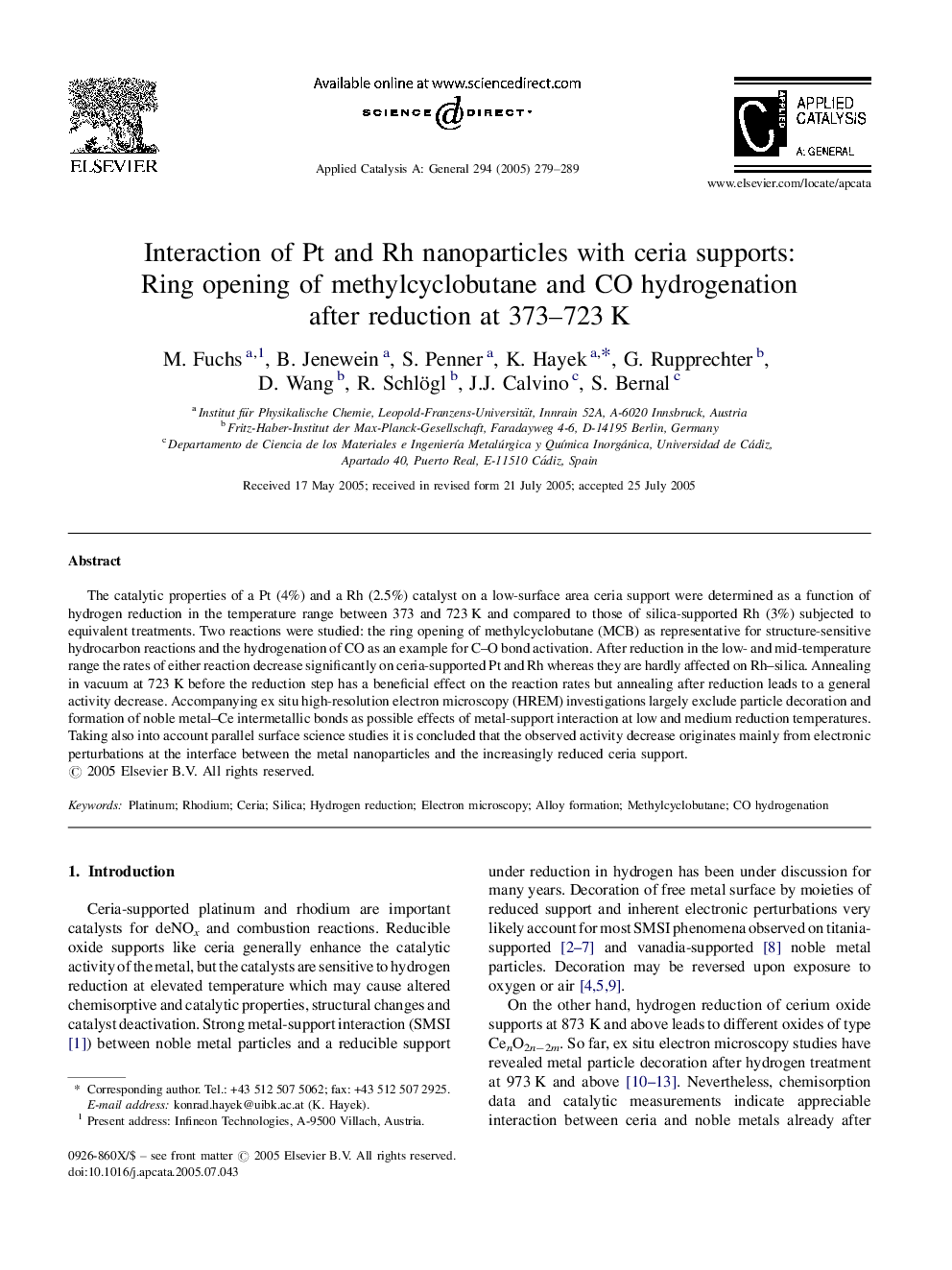| Article ID | Journal | Published Year | Pages | File Type |
|---|---|---|---|---|
| 10238991 | Applied Catalysis A: General | 2005 | 11 Pages |
Abstract
The catalytic properties of a Pt (4%) and a Rh (2.5%) catalyst on a low-surface area ceria support were determined as a function of hydrogen reduction in the temperature range between 373 and 723Â K and compared to those of silica-supported Rh (3%) subjected to equivalent treatments. Two reactions were studied: the ring opening of methylcyclobutane (MCB) as representative for structure-sensitive hydrocarbon reactions and the hydrogenation of CO as an example for CO bond activation. After reduction in the low- and mid-temperature range the rates of either reaction decrease significantly on ceria-supported Pt and Rh whereas they are hardly affected on Rh-silica. Annealing in vacuum at 723Â K before the reduction step has a beneficial effect on the reaction rates but annealing after reduction leads to a general activity decrease. Accompanying ex situ high-resolution electron microscopy (HREM) investigations largely exclude particle decoration and formation of noble metal-Ce intermetallic bonds as possible effects of metal-support interaction at low and medium reduction temperatures. Taking also into account parallel surface science studies it is concluded that the observed activity decrease originates mainly from electronic perturbations at the interface between the metal nanoparticles and the increasingly reduced ceria support.
Keywords
Related Topics
Physical Sciences and Engineering
Chemical Engineering
Catalysis
Authors
M. Fuchs, B. Jenewein, S. Penner, K. Hayek, G. Rupprechter, D. Wang, R. Schlögl, J.J. Calvino, S. Bernal,
